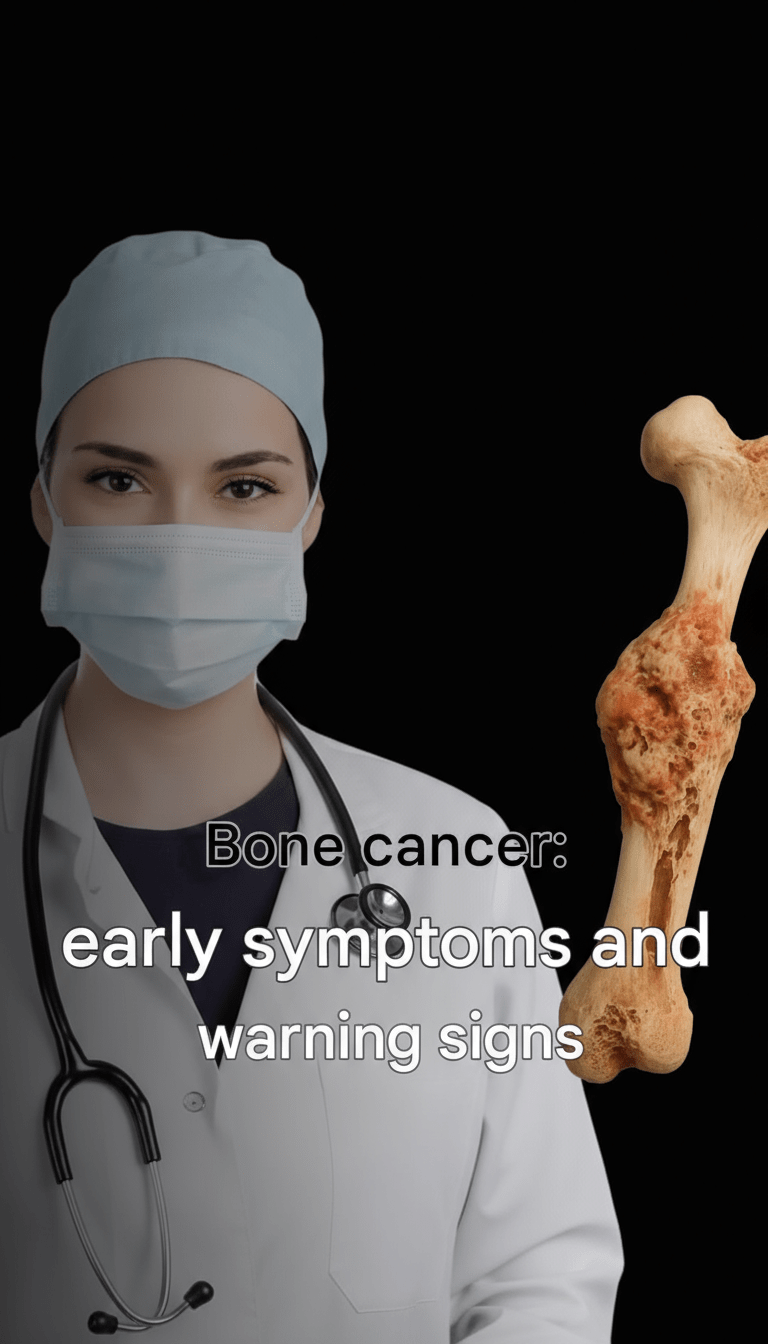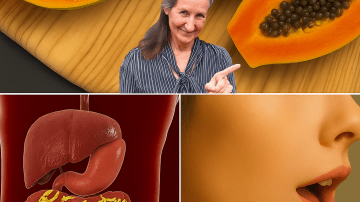Bone cancer—though a rare diagnosis—is a devastating and serious disease where early detection is absolutely non-negotiable. The challenge lies in its insidious nature: the initial symptoms often mimic common, less serious ailments like a pulled muscle, growth pain in adolescents, or simple arthritis. This frequent misdiagnosis creates a dangerous delay, yet timely identification of the warning signs is the single most critical factor that can make all the difference in achieving successful treatment outcomes, preserving function, and ensuring complete recovery.

Are you or a loved one experiencing unexplained, persistent pain that defies typical remedies? Ignoring long-lasting, deep bone pain is a risk no one should take. This comprehensive guide will empower you with the essential knowledge needed to distinguish harmless aches from critical warnings. We will meticulously detail the different types of bone cancer, the five critical symptoms you must monitor, and the vital next steps for evaluation. Your body communicates in subtle ways; it is time to learn the language of these crucial warning signs. Stay focused on every word—your awareness is the first and most powerful step in self-protection.
🔬 Understanding the Threat: What Bone Cancer Is and Its Types
Bone cancer occurs when abnormal, malignant cells begin to grow uncontrollably within the hard tissue of the bone. Understanding the categories is essential for comprehending the severity of the diagnosis.
- Primary Bone Cancer: This is the rarer, highly aggressive form where the cancer originates directly within the bone tissue itself. These cancers require specialized and often intensive treatment.
- Secondary Bone Cancer (Metastatic): This is far more common. It occurs when cancer begins in another organ (such as the lung, breast, or prostate) and subsequently spreads (metastasizes) to the bones.
The Three Most Common Primary Bone Cancers:
- Osteosarcoma:
- Target Population: Most often affects teenagers and young adults.
- Location: Typically arises in the long bones of the body, particularly around the knee (lower femur or upper tibia) or in the upper arm (humerus).
- Nature: This is generally the most common type of primary bone cancer and tends to be aggressive.
- Chondrosarcoma:
- Target Population: Usually appears in adults (over 40).
- Location: Commonly found in the cartilage of the pelvis, shoulders, or ribs.
- Nature: Tends to grow slower than Osteosarcoma and arises from cartilage cells.
- Ewing Sarcoma:
- Target Population: More common in children and young people.
- Location: Develops in the bone itself or in the nearby soft tissues.
- Nature: Can be highly aggressive and often requires intensive chemotherapy.
⚠️ The Five Critical Symptoms: Warning Signs You Must Act On
While every case is unique, the majority of bone cancer diagnoses share a set of common, escalating symptoms that should serve as immediate red flags.
1. ⚡ Persistent and Escalating Bone Pain
- The Most Frequent Symptom: Unexplained bone pain is the most consistent and often the earliest symptom reported.
- The Progression: Initially, the pain may be subtle, intermittent, and mistaken for simple strain or muscle soreness. However, unlike regular aches, the pain caused by a growing tumor tends to become:
- Constant: It does not go away with rest or over-the-counter pain relievers.
- More Intense: The severity of the pain steadily increases over time.
- Nocturnal: It is frequently worse at night and can interrupt sleep, or it intensifies during physical activity.
- Actionable Insight: Unexplained, deep, and long-lasting bone pain that lasts longer than two weeks should always prompt a medical consultation.

2. 💢 Localized Swelling and Tenderness
- The Physical Sign: As the tumor grows within or presses against the surrounding tissues, localized swelling, inflammation, or a noticeable lump may appear near the affected bone.
- The Sensation: The area might feel warm to the touch and distinctly tender or painful when pressure is applied.
- Actionable Insight: If swelling fails to recede or actively continues to increase in size, it is a significant warning sign that requires immediate evaluation.
3. 💔 Fragile Bones and Unexpected Fractures
- The Pathological Fracture: A growing tumor weakens the structural integrity of the bone tissue, making it brittle. This weakening can cause a fracture to occur from a minor injury, bump, or fall that would not normally break a healthy bone.
- The Warning: These “pathological fractures” are a profound and clear indication that the bone’s internal structure has been seriously compromised by an underlying disease process.
- Actionable Insight: If a fracture occurs with little or no trauma, particularly in the absence of an accident, it should be thoroughly investigated for an underlying malignancy.
4. 🚶 Limited Mobility and Loss of Function
- Mechanical Interference: Pain and swelling, particularly near a joint (like the knee, hip, or shoulder), can significantly restrict the patient’s range of motion.
- Functional Impact: Patients may find it difficult to move the affected limb, bear weight, or perform nearby joint movements. In more advanced or critical cases, this functional loss can severely interfere with basic everyday activities such as walking, lifting, or bending.
- Actionable Insight: Any progressive difficulty or pain in moving a limb that lasts for more than a few days warrants a professional assessment.
5. 🌡️ General Systemic Symptoms
Beyond localized pain and swelling, the body’s systemic response to cancer growth can manifest through non-specific, general symptoms.
- Unexplained Weight Loss: Losing weight rapidly and without conscious dieting effort.
- Constant Fatigue: Persistent, debilitating fatigue or weakness that is not relieved by rest.
- Fever and Sweats: Persistent, low-grade fevers or drenching night sweats.
- Anaemia: The cancer can interfere with blood cell production, leading to anaemia, which causes symptoms like paleness, shortness of breath, or general weakness.
- Enlarged Lymph Nodes: Swollen lymph nodes, particularly those near the site of the tumor, may indicate that the cancer has begun to spread (metastasis).
🩺 The Critical Timeframe: When to See a Doctor
The key to treating bone cancer effectively is early diagnosis. Do not procrastinate or self-diagnose based on common causes of pain.
- The Two-Week Rule: If deep, localized pain, swelling, or any of the critical symptoms detailed above last longer than two weeks and do not show clear signs of improvement with standard rest or anti-inflammatories, you must seek medical advice immediately.
- Prioritize Evaluation: Bring any history of unexpected weight loss, night sweats, or fragile bones to your physician’s attention. Timely diagnosis significantly increases the chances of effective treatment, limb preservation, and full recovery.
🔍 Diagnosis and Treatment: The Path Forward
If bone cancer is suspected, a medical team will follow a defined protocol for confirmation and staging.
- Imaging Exams: The initial step involves visualizing the bone. This includes detailed X-rays, followed by cross-sectional imaging like CT scans or MRI (Magnetic Resonance Imaging), which are used to precisely locate the tumor, determine its size, and check if it has spread beyond the bone.
- Biopsy: The definitive diagnosis requires a biopsy. A small tissue sample is surgically removed (or removed via a specialized needle) and examined by a pathologist to accurately identify the type and grade of cancer.
- Blood Tests: Comprehensive blood work is used to assess general health, check for anaemia, and look for specific markers that may indicate cancer activity.
Core Treatment Modalities:
- Surgery: This is often the primary treatment, focused on removing the tumor while attempting to preserve the limb’s function (limb-sparing surgery). This usually involves replacing the removed bone with a metallic implant or a graft.
- Chemotherapy: Used to destroy cancer cells. It is often given before (neoadjuvant) and after (adjuvant) surgery, particularly for aggressive forms like Osteosarcoma, to shrink the tumor and kill any residual cancer cells.
- Radiotherapy (Radiation Therapy): Uses high-energy rays to kill cancer cells. It is typically employed when surgery is not feasible, or it is used as an additional treatment to target any areas where the cancer may recur.
🛡️ Prevention and Awareness: Your Role in Early Detection
While most cases of bone cancer are not preventable, maintaining a proactive stance is the most effective form of defense.
- Healthy Lifestyle: Although not a direct preventative measure against bone cancer, maintaining a healthy lifestyle—including a balanced diet, avoiding smoking, and regular physical activity—supports overall health and resilience.
- Radiation Avoidance: Minimize unnecessary exposure to high-dose radiation whenever possible.
- Family History Awareness: Individuals with a family history of bone cancer or certain rare genetic syndromes (like Li-Fraumeni syndrome) should discuss their risk factors with an oncologist and adhere to recommended regular check-ups and screenings.

🌟 Final Conclusion: Awareness Saves Lives
Bone cancer may be a rare disease, but its potential impact underscores the absolute necessity of vigilance. The key to mitigating its severity and securing a positive outcome is incredibly simple: awareness. By meticulously listening to your body, recognizing the warning signs—especially persistent, unexplained bone pain—and having the resolve to seek professional medical evaluation when symptoms endure, you are engaging in the most crucial step of all. Staying informed and acting decisively is the first line of defense; early detection truly saves lives.
Would you like to know more about the different stages of Osteosarcoma treatment?






